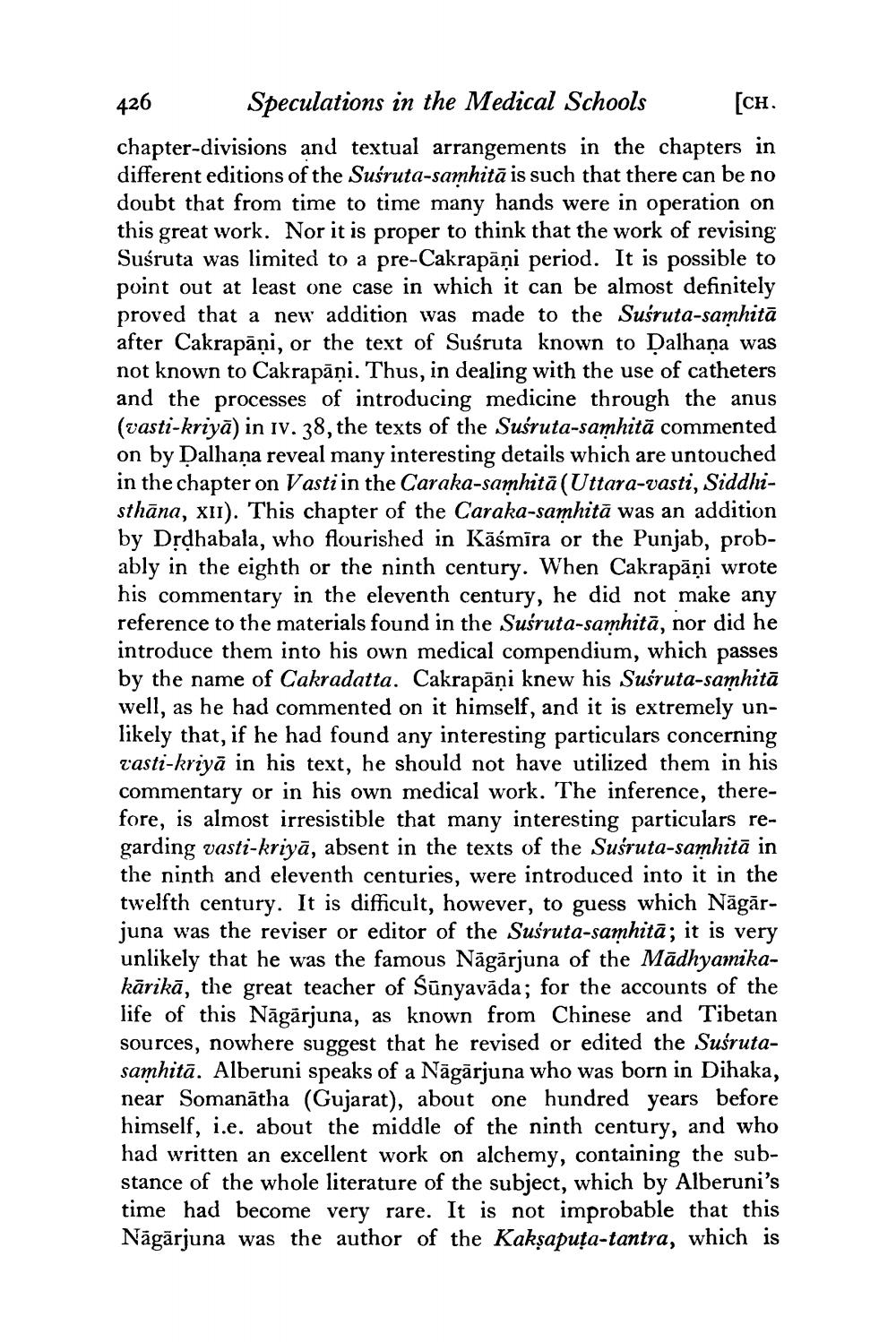________________
426
lations in the Medical Schools
TCH.
chapter-divisions and textual arrangements in the chapters in different editions of the Suśruta-samhitā is such that there can be no doubt that from time to time many hands were in operation on this great work. Nor it is proper to think that the work of revising Susruta was limited to a pre-Cakrapāņi period. It is possible to point out at least one case in which it can be almost definitely proved that a new addition was made to the Sušruta-samhitā after Cakrapāņi, or the text of Susruta known to Dalhaņa was not known to Cakrapāņi. Thus, in dealing with the use of catheters and the processes of introducing medicine through the anus (vasti-kriyā) in iv. 38, the texts of the Sušruta-samhitā commented on by Dalhaņa reveal many interesting details which are untouched in the chapter on Vasti in the Caraka-samhitā (Uttara-vasti, Siddhisthāna, xii). This chapter of the Caraka-samhită was an addition by Drdhabala, who flourished in Kāśmīra or the Punjab, probably in the eighth or the ninth century. When Cakrapāņi wrote his commentary in the eleventh century, he did not make any reference to the materials found in the Suśruta-samhitā, nor did he introduce them into his own medical compendium, which passes by the name of Cakradatta. Cakrapāni knew his Susruta-samhita well, as he had commented on it himself, and it is extremely unlikely that, if he had found any interesting particulars concerning vasti-kriya in his text, he should not have utilized them in his commentary or in his own medical work. The inference, therefore, is almost irresistible that many interesting particulars regarding vasti-kriyā, absent in the texts of the Suśruta-samhitā in the ninth and eleventh centuries, were introduced into it in the twelfth century. It is difficult, however, to guess which Nāgārjuna was the reviser or editor of the Susruta-samhitā; it is very unlikely that he was the famous Nāgārjuna of the Mādhyamikakārikā, the great teacher of Sūnyavāda; for the accounts of the life of this Nāgārjuna, as known from Chinese and Tibetan sources, nowhere suggest that he revised or edited the Suśrutasamhitā. Alberuni speaks of a Nāgārjuna who was born in Dihaka, near Somanātha (Gujarat), about one hundred years before himself, i.e. about the middle of the ninth century, and who had written an excellent work on alchemy, containing the substance of the whole literature of the subject, which by Alberuni's time had become very rare. It is not improbable that this Nāgārjuna was the author of the Kakşapuța-tantra, which is




